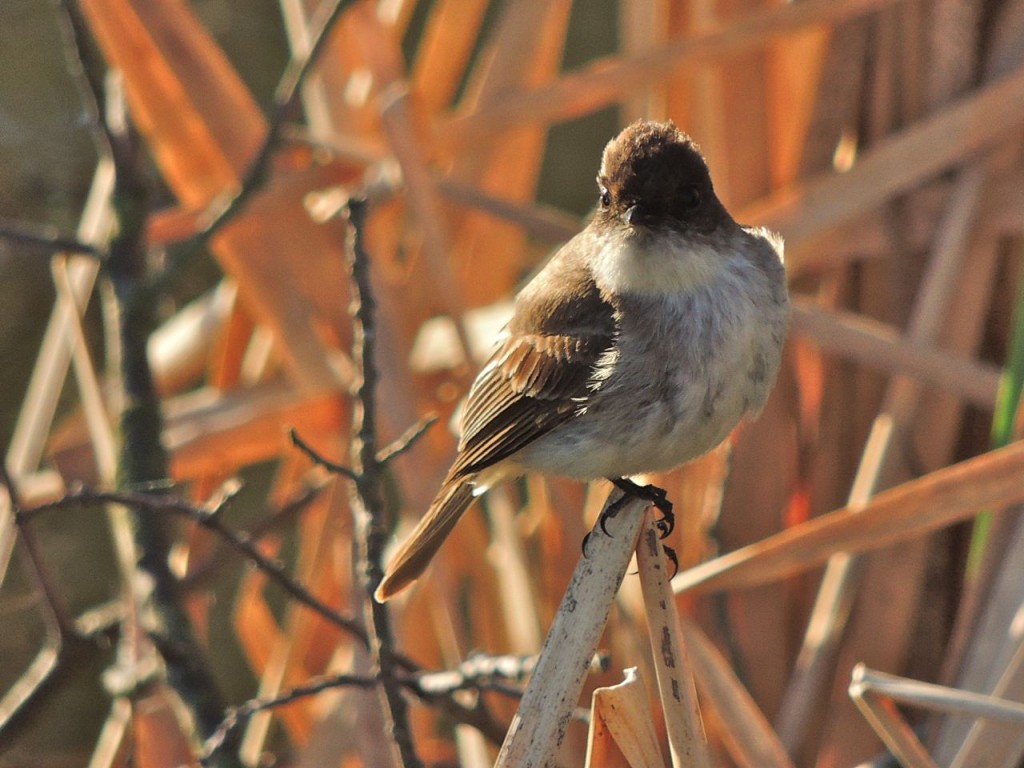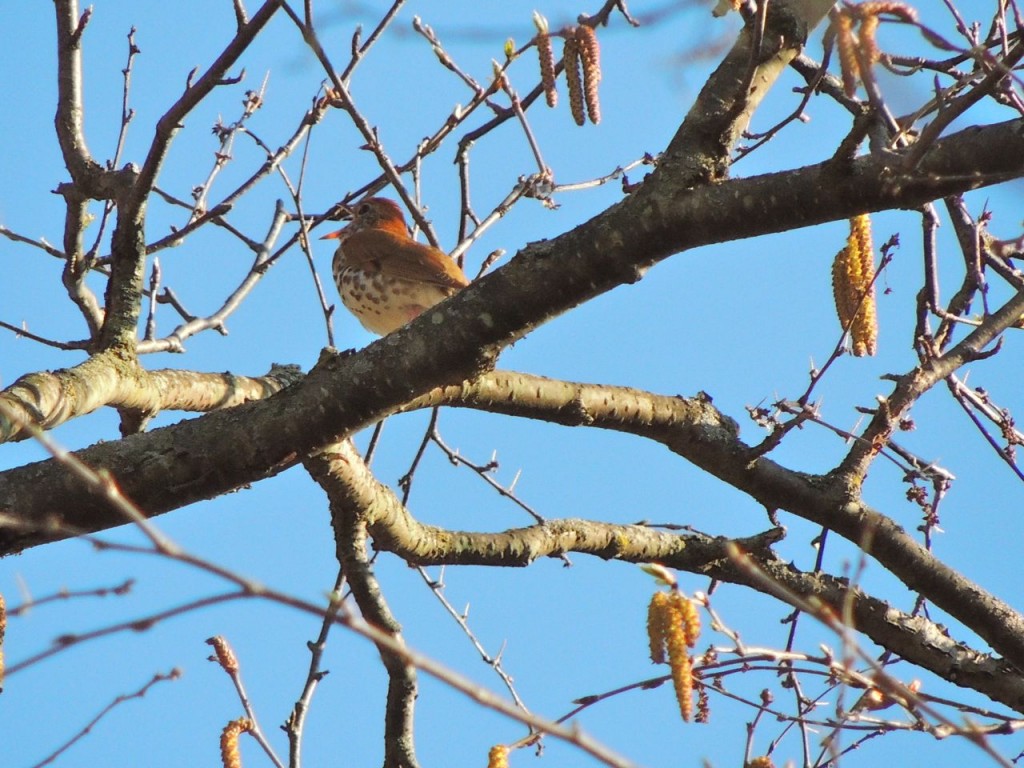May 10 2014 . Burlington ON. As the previous posting suggests, it’s not all about flash; there’s as much to birding by ear as by eye. Many of our woodland birds depend on voice or other audible communication to announce their territorial claim. I say ‘other audible communication’ because, for example, the Ruffed Grouse uses low frequency thumps generated by rapid wing-beats and some woodpecker species find resonant logs, pipes and metal siding on which to beat out a ‘keep your distance’ tattoo.
This morning I had an hour or two to spare and opted to walk around a familiar wooded valley. For mid-May there was less to be seen than I’d anticipated but it was a pleasant hike nevertheless. On the slightly exotic front were Warbling Vireos, Black-throated Green Warblers, and a couple of Blue-gray Gnatcatchers.
From a look-out platform, I watched an Eastern Phoebe hawking for early morning insects and I rather suspect that it liked the look of the platform as a nesting site; at least, somewhere on the underside of it.

Best of the walk was a singing Wood Thrush, found and photographed with difficulty in the very highest branches of a Yellow Birch. The Wood Thrush is one of five thrushes that we see and hear as summer visitors. Superficially they look much alike but with a bit of sorting out work each becomes unmistakable, but you do need practice. The Wood Thrush’s song is one of those “Oh, listen there’s a…” sounds of the eastern deciduous forests. My best shot at a description ( I really should stop trying to do this) is starting with a couple of introspective ‘ po po’ notes then ‘eee-O-lay (pause) lay-ay-lo’ ending with a reflective ‘chuurrr’; pause and repeat. It’s worth listening for in May and June.
